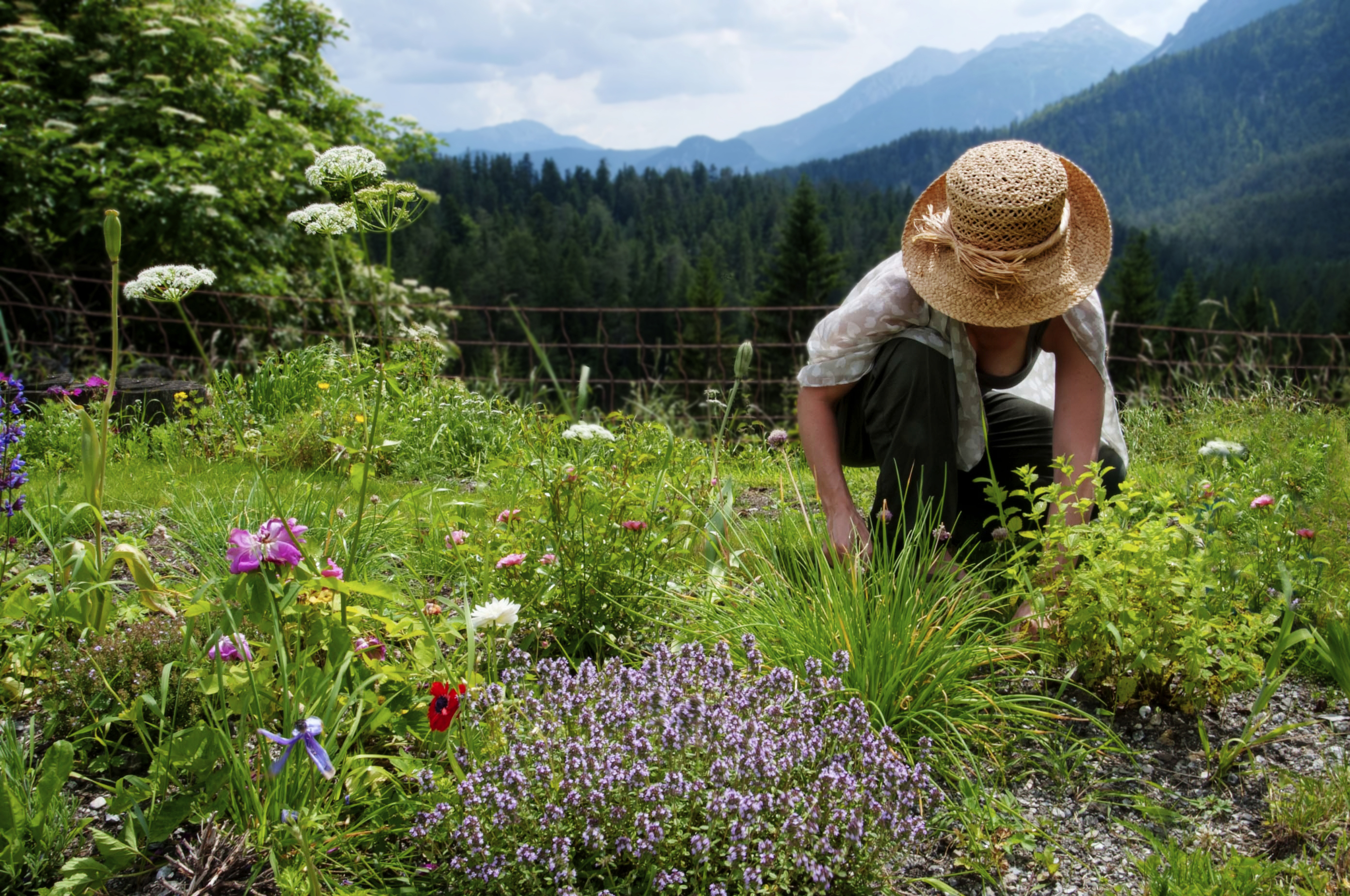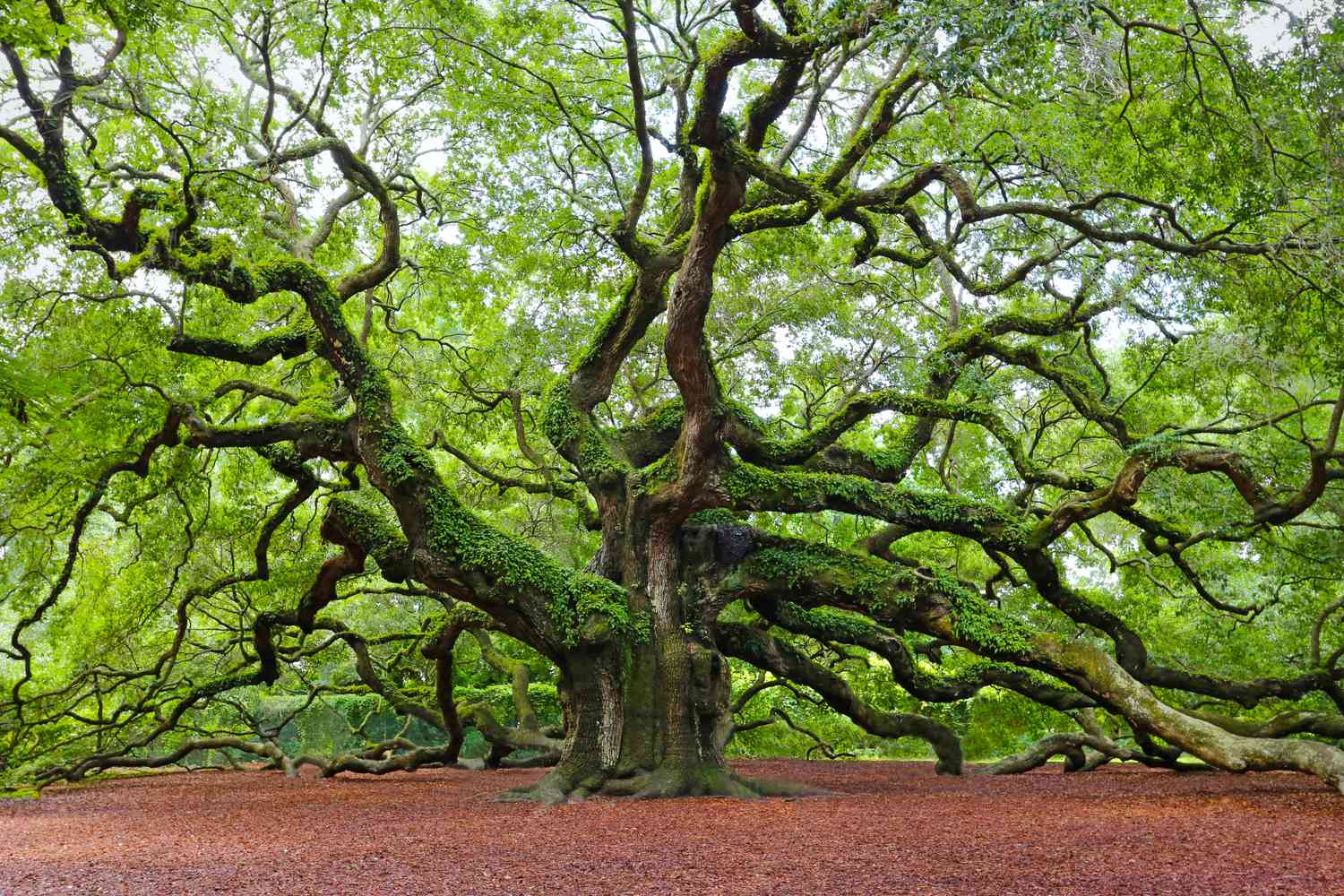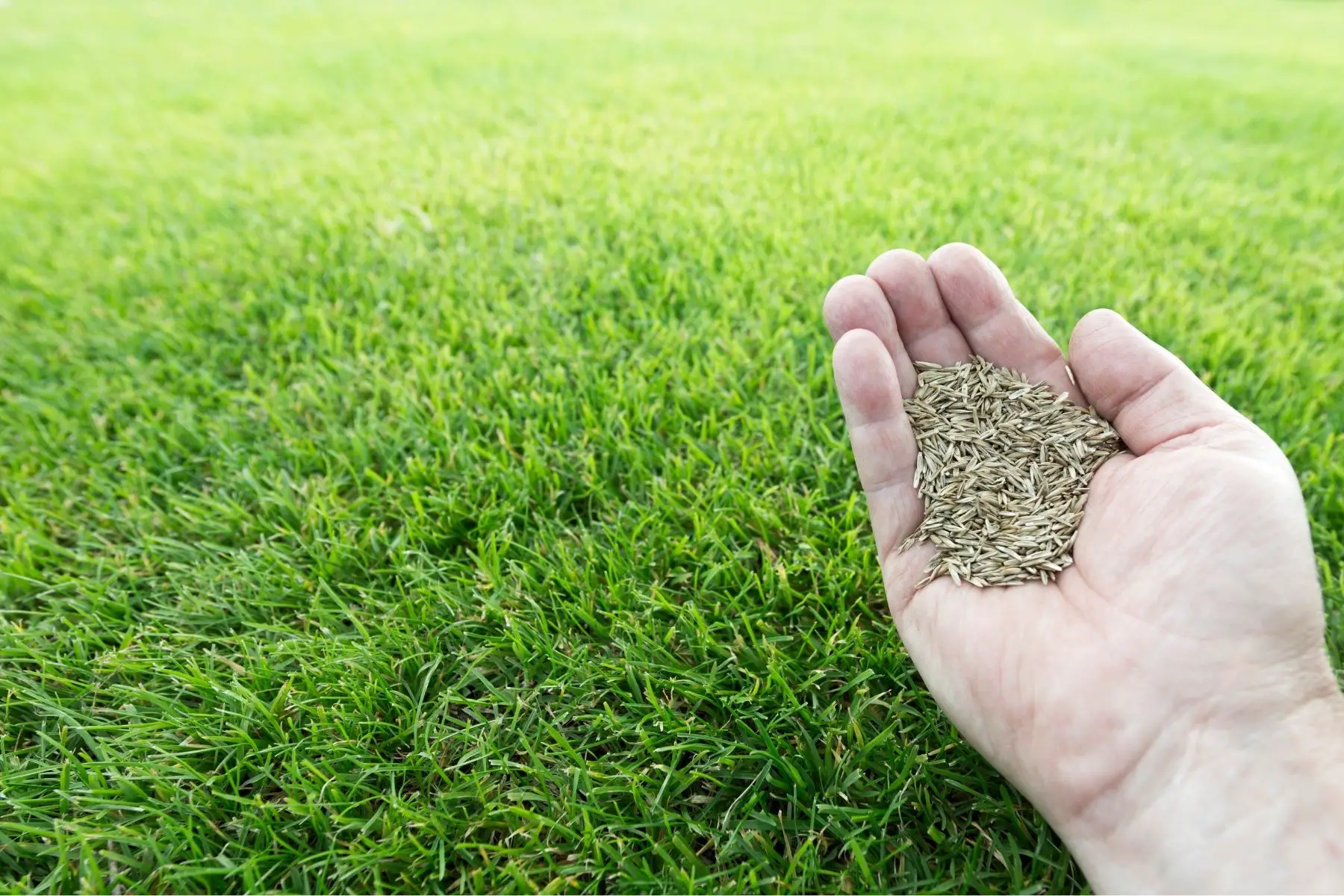Home>Gardening Techniques>Plant Care>How Long Do Maple Trees Take To Grow


Plant Care
How Long Do Maple Trees Take To Grow
Modified: January 22, 2024
Discover the plant care essentials for maple trees and learn how long it takes for these majestic trees to grow. Enhance your gardening knowledge today!
(Many of the links in this article redirect to a specific reviewed product. Your purchase of these products through affiliate links helps to generate commission for Chicagolandgardening.com, at no extra cost. Learn more)
Table of Contents
Introduction
Welcome to the world of maple trees! These majestic trees not only provide shade and beauty to our landscapes but also produce the beloved maple syrup. If you’ve ever wondered how long it takes for a maple tree to grow, you’ve come to the right place. In this article, we will explore the various factors that influence the growth of maple trees, the different growth stages they go through, and the average time it takes for them to reach maturity.
Maple trees are known for their resilience and adaptability, thriving in a wide range of climates and soil conditions. They are deciduous trees, shedding their leaves in the fall and regenerating them in the spring. While some maple species can grow relatively quickly, others may take several decades to reach their full potential.
Understanding the growth process of maple trees can help you make informed decisions when planting, pruning, and caring for these trees. Whether you’re a homeowner looking to add some shade to your garden or a maple syrup enthusiast considering tapping your own trees, knowing how long it takes for a maple tree to grow is essential.
So, let’s dive into the fascinating world of maple tree growth and discover the factors that influence their development!
Factors Affecting Maple Tree Growth
Maple tree growth is influenced by various factors that interact to determine how quickly or slowly a tree develops. Understanding these factors can help you optimize the growth conditions for your maple trees and ensure their healthy and robust growth.
- Species: The species of maple tree you are dealing with plays a significant role in determining the growth rate. Some maple species, such as the Silver Maple (Acer saccharinum), are known for their fast growth, while others, like the Sugar Maple (Acer saccharum), may grow at a slower pace.
- Climate: Maple trees thrive in temperate climates, with most species preferring a range of moderate temperatures. Extreme heat or cold can hinder their growth. It’s important to choose a maple tree species that is well-suited to your local climate to ensure optimal growth.
- Soil Conditions: The quality and composition of the soil have a significant impact on maple tree growth. Well-drained soil with adequate nutrient levels promotes healthy root development and overall growth. Maple trees prefer slightly acidic to neutral soil pH levels.
- Water: Sufficient water is crucial for the growth of maple trees, especially during the early stages. Proper irrigation is essential, particularly during dry spells or drought conditions. However, waterlogged soil can have adverse effects, leading to root rot and stunted growth.
- Sunlight: Maple trees require an adequate amount of sunlight to thrive. Most species prefer full sun or partial shade, although some varieties can tolerate more shade. Insufficient sunlight can lead to weak growth and sparse foliage.
- Pruning and Maintenance: Regular pruning helps shape maple trees and remove dead or diseased branches, promoting healthy growth. Pruning in the early spring or late fall, when the tree is dormant, is generally recommended.
- Pests and Diseases: Maple trees can be susceptible to various pests and diseases, such as aphids, scale insects, and fungal infections. These can hinder their growth and overall health. Identifying and addressing any pest or disease issues promptly is crucial for maintaining optimal growth.
By considering these factors and ensuring the right conditions, you can support the healthy growth of your maple trees and enjoy their beauty and benefits for years to come.
Growth Stages of Maple Trees
Maple trees go through several distinct stages of growth as they mature. Understanding these growth stages can give you insights into the development and care requirements of your maple trees.
- Seed Germination: The growth journey of a maple tree begins with seed germination. Maple tree seeds, known as samaras or “helicopter seeds,” are dispersed by wind, and when they land on suitable soil, they begin to grow. During this stage, the seed absorbs water and nutrients from the soil, leading to the emergence of a root system and a small seedling.
- Sapling Stage: As the maple tree continues to grow, it enters the sapling stage. During this period, the tree establishes a stronger root system and begins to develop a trunk and branches. The sapling stage is a critical time for providing proper care, including regular watering, appropriate pruning, and protection from pests and diseases.
- Juvenile Stage: The tree enters the juvenile stage when it reaches a larger size and develops a more robust branching structure. The foliage becomes more abundant, and the tree gains height and thickness. While the rate of growth may vary depending on the species and environmental conditions, the tree starts to exhibit its characteristic leaf shape and bark texture.
- Adolescent Stage: During this stage, the maple tree continues to grow taller and broader. Its branches become more well-established, providing a more substantial canopy. The tree is now capable of producing its distinctive flowers and, in some cases, the iconic maple seeds. It is essential to continue providing proper care and maintenance during this period to ensure healthy growth.
- Maturity: The maturity stage is reached when the maple tree has developed its full size and structure. The growth rate may slow down compared to earlier stages, but the tree continues to grow in thickness and density over time. At this stage, the tree may produce an abundance of flowers and seeds, contributing to the sustainability of its species.
Keep in mind that the duration of each growth stage can vary depending on factors such as species, climate, and care provided. It’s crucial to monitor and adapt your care routine to meet the specific needs of your maple tree as it progresses through these growth stages.
Average Growth Time for Maple Trees
The time it takes for a maple tree to reach maturity can vary depending on various factors such as species, climate, soil conditions, and care provided. On average, it can take anywhere from 20 to 30 years for a maple tree to grow from a seedling to full maturity.
Fast-growing maple species, such as the Silver Maple (Acer saccharinum), may reach a height of 50 feet or more within 20 years. On the other hand, slower-growing varieties like the Sugar Maple (Acer saccharum) may take 30 to 40 years to reach their maximum height of 70 feet or more.
It’s important to note that while the above timelines provide a general idea of the growth time for maple trees, they are not set in stone. Various factors can influence the growth rate, including the health of the tree, environmental conditions, and the care it receives.
In addition to height, the trunk diameter of a mature maple tree can range from 2 to 3 feet or more, depending on the species. The diameter growth can take several decades to achieve as the tree develops its root system and its branches continue to expand.
It’s worth mentioning that while maple trees take time to reach maturity, they can add beauty and value to your landscape throughout their growth journey. Even young maple trees can provide shade and aesthetic appeal, and they can enhance the overall ambiance of your outdoor space.
By understanding the average growth time for maple trees, you can have realistic expectations and develop a long-term plan for their care and maintenance. Remember to consider the specific needs of your maple tree species, provide the necessary nutrients, water, and sunlight, and keep an eye on any potential issues that may impact its growth.
With patience and proper care, you can witness the gradual transformation of your maple tree into a mature, magnificent specimen that will bring joy and beauty for generations to come.
Factors That May Impact Growth Time
While the average growth time for maple trees can provide a general idea of how long it takes for them to reach maturity, several factors can influence their growth rate. Understanding these factors can help you better manage and care for your maple trees.
- Species: Different maple tree species have varying growth rates. Some species are known for their fast growth, while others may take longer to reach maturity. It’s essential to choose a maple species that is well-suited to your climate and desired growth rate.
- Environmental Conditions: The climate, soil conditions, and overall environment play a significant role in the growth of maple trees. Factors such as temperature, rainfall, soil fertility, and sunlight availability can all impact the tree’s growth rate. Trees in favorable conditions will generally grow faster than those in less optimal environments.
- Care and Maintenance: The level of care and maintenance provided to maple trees can greatly influence their growth time. Regular watering, proper pruning, and fertilization can promote healthy growth and help trees reach maturity more quickly. Conversely, neglecting basic care needs can delay their growth and development.
- Pests and Diseases: Maple trees can be susceptible to various pests and diseases, such as aphids, scale insects, fungal infections, and root rot. These issues can weaken the tree and slow down its growth. Regular monitoring and prompt identification and treatment of any pest or disease problems are essential for maintaining optimal growth.
- Competition: Nearby plants, trees, and vegetation can compete with maple trees for resources such as water, nutrients, and sunlight. Excessive competition can hinder the growth of maple trees and prolong their development time. Proper spacing and regular maintenance to eliminate competing vegetation can help accelerate their growth.
- Genetics and Health: The genetic makeup and overall health of the tree can affect its growth rate. Some maple trees may naturally have slower growth rates due to genetic factors. Additionally, trees that are weakened by disease or other health issues may experience slower growth or stunted development.
It’s important to consider these factors and make adjustments accordingly to ensure optimal growth for your maple trees. By providing the right care, creating a suitable environment, and addressing any issues promptly, you can help your maple trees reach their full potential within the expected time frame.
Tips for Growing Maple Trees Faster
If you’re looking to expedite the growth of your maple trees and enjoy their benefits sooner, there are several tips you can follow to help them grow faster. While it’s important to remember that each tree has its own growth rate, these tips can enhance their development and maximize their potential.
- Proper Watering: Ensure that your maple trees receive sufficient water, especially during the crucial early stages of growth. Consistent watering will help establish a healthy root system and promote faster growth. However, be careful not to overwater, as this can lead to root rot.
- Optimal Soil Conditions: Choose well-drained soil with good fertility for your maple trees. Conduct a soil test to determine its pH levels and nutrient content. If necessary, amend the soil with organic matter or fertilizers to create optimal growing conditions and boost growth.
- Pruning: Prune your maple trees regularly, particularly in the early years. Proper pruning can help shape the tree, remove dead or diseased branches, and encourage new growth. Focus on maintaining a well-balanced canopy to ensure healthy development.
- Choose Fast-Growing Species: Select maple tree species known for their rapid growth, such as the Silver Maple (Acer saccharinum) or the Autumn Blaze Maple (Acer x freemanii). These species can grow at a quicker rate and help you achieve desired results faster.
- Sunlight Exposure: Ensure that your maple trees receive adequate sunlight for optimal growth. Most maple species thrive in full sun, although some can tolerate partial shade. Prune surrounding vegetation if needed to allow ample sunlight to reach the tree.
- Fertilization: Consider using fertilizers specifically formulated for maple trees to provide essential nutrients that promote growth. Follow the instructions on the packaging and apply the fertilizer at the appropriate times of the year to nourish your trees and support vigorous growth.
- Weed and Pest Management: Regularly remove weeds and grass from around the base of your maple trees. These competing plants can hinder their growth by robbing them of nutrients and water. Additionally, monitor for pests and diseases and take necessary actions to address any issues promptly.
- Root Development: Support healthy root development by planting maple trees in well-prepared soil with sufficient space for root expansion. Avoid planting them too close to structures or other trees, as this can restrict root growth. Adequate root development will promote overall growth and vigor.
Remember that while these tips can help accelerate the growth of your maple trees, it’s crucial to exercise patience. Trees, by nature, take time to grow and establish themselves properly. Implementing these practices consistently and providing the necessary care will ultimately lead to healthier, faster-growing maple trees.
Conclusion
Growing maple trees can be a rewarding experience, as they provide shade, beauty, and even a sweet treat in the form of maple syrup. Understanding the factors that influence maple tree growth, the growth stages they go through, and the average growth time can help you effectively care for these trees and enhance their development.
Factors such as species, climate, soil conditions, and care provided all play a role in the growth rate of maple trees. While the average growth time for maple trees ranges from 20 to 30 years, it’s essential to remember that individual tree growth can vary. By considering these factors, you can optimize growing conditions and support healthy and faster growth.
Throughout a maple tree’s growth journey, from seed germination to maturity, it undergoes distinct stages of development. Seedlings progress into saplings, then move into the juvenile and adolescent stages, finally reaching maturity. Each stage requires proper care, including watering, pruning, and protection against pests and diseases.
Several factors, such as species, environmental conditions, care practices, pests and diseases, competition, and the tree’s genetics and health, can impact growth time. By identifying and addressing these factors, you can help maple trees grow more efficiently and reach their full potential sooner.
If you’re looking to accelerate the growth of your maple trees, follow some key tips, including proper watering, ensuring optimal soil conditions, regular pruning, selecting fast-growing species, providing adequate sunlight, fertilizing when needed, managing weeds and pests, and supporting root development.
In conclusion, growing maple trees requires patience, knowledge, and proper care. By understanding the factors that influence growth, the different growth stages, and implementing the right techniques, you can ensure the healthy and faster growth of your maple trees. Enjoy the beauty, shade, and the potential for homemade maple syrup that these trees bring to your landscape.








